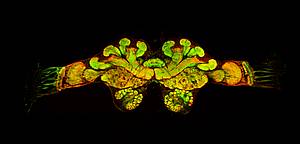Project B5 Groh
Timing of behavioural transitions and sensory preferences in Camponotus ants
Summary
Division of labour is fundamental to the efficient functioning of insect societies and is believed to be the main determinant of their vast ecological and evolutionary success. In nectar-feeding ants of the genus Camponotus, division of labour within the worker caste is mainly based on a temporal polyethism. The most prominent behavioural transition from nursing inside the nest to outside foraging is associated with major changes in sensory input and motor activities. Using Camponotus ants as a model for testing division of labour under controlled laboratory conditions and in the field, we want to identify social, environmental and endogenous factors that are involved in the timing of this important behavioural transition, and focus on the neuronal plasticity that enables the brain to accommodate changes in sensory tasks associated with the transition.
It is now clearly established that the mushroom bodies of insect brains undertake high-level sensory integration and are involved in the organization of complex behaviours that include learning, the formation of associative memories, and orientation. Synaptic plasticity is a powerful underlying candidate mechanism in the mushroom body’s involvement in these behaviours, and is anticipated to underlie adaptations to environmental changes as well as internal changes when the insect undertakes individual tasks. In particular, we want to link the timing of synaptic reorganization in the mushroom bodies to associated changes in behaviour.
We will address plasticity of timing of the behavioural transition at the individual and at the colony level:
- Do group size and the presence of brood influence the timing of the transition from nursing to foraging behaviour?
- Which environmental factors cause seasonal changes in the foraging time-window associated with different sensory inputs?
Central to both questions is how these changes are regulated and accommodated by the central nervous system. We aim to reveal important insights into the plasticity of neuronal circuits that accompany these changes in olfactory and visual processing in nectar feeding Camponotus ants.

Figure: The brain of a 1-day old C. rufipes worker. Frontal view of a dorsal/central plane in the brain labeled with anti-synapsin (red) and fluorophore-conjugated phalloidin (green) showing the major neuropils.





